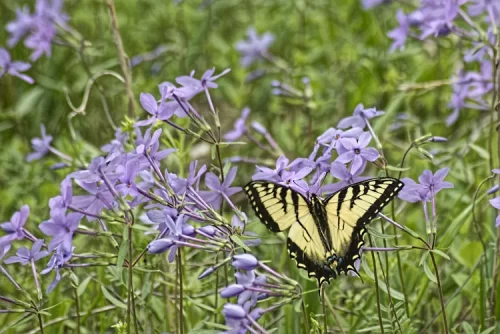6 Gardener-Approved Tips to Attract Helpful Pollinators in Your Yard

As far as planning the perfect summer garden goes, even the most novice of gardeners know the basic necessities: sunlight, water, and healthy soil. If you really want your garden to thrive, though, you need to plant the right mix of plants, too.
The best backyards and gardens include a few plants that are known to attract healthy pollinators, like bees, butterflies, and birds. These handy helpers will keep things growing and thriving all season long.
Figuring out the right balance, however, can be extremely tricky. In an effort to remove some of the mystery, we turned to a few experts at American Meadows who kindly shared their top tips for attracting helpful pollinators to your yard this summer.
Identify Your Local Pollinators
One of the best things you can do is understand who your local pollinators are. Then, you can more easily figure out how to attract them. As Kendall Frost, Brand Content Manager for American Meadows explains, the easiest pollinators to identify are the ones you probably already know: butterflies, honeybees, bumblebees, and hummingbirds.
“There are other pollinators that are a sign of a healthy garden,” Frost says, who says you can also add wasps, moths, flies, beetles, and ants to the list.
Learn How Different Plant Types Are Pollinated
Once you’ve identified your pollinators, Megan Foster, Perennial and Bulb Expert for American Meadows, says it’s key to then learn about how pollinating actually works. If that sounds a little too dry for your summer plans, Foster assures us you don’t have to lock yourself inside and read up—you can learn by simply observing your beautiful garden.
“When I see an insect that I haven’t seen before, I enjoy using an app like iNaturalist to ID the animal and learn a little bit about it,” says Foster, who recently spotted a slightly terrifying wasp in her own garden. As it turns out, it was something called a Great Black Wasp, and Foster overcame her fears to watch it take care of her plants.
“The more you learn, the more you want to learn,” she says.
It’s All About the Right Seasonal Balance
While your focus right now might be on your summer garden, Foster says it’s important to have a mix of plants that will carry you from spring into fall. This way, your garden will offer a steady and reliable supply of nectar and pollen. This mix will depend pretty heavily on your location, so a trip to your nearby nursery or garden center is a good idea.
“North American native plants, including popular perennials like coneflowers, milkweed, lupines, and asters, will be favored by North American native pollinators like bumblebees and butterflies,” says Foster. “Aim to include as many native plants as you can for pollinators.”
Vary Your Flower Shapes
One thing many gardeners might not consider is how flower shape plays into which pollinators you attract.
“Showy petals, flat landing pads, or tubular blossoms will be attractive to different pollinators,” says Hadley Mueller, Master Gardener for High Country Gardens. “Make sure your garden boasts a variety of different flower shapes, ideally with some of each blooming simultaneously.”
Avoid Pesticides
Of course, if you’re trying to attract certain bugs and their buddies, then using pesticides, herbicides, and fungicides will only have the opposite effect. Instead, Frost and the rest of the American Meadows team recommend looking into natural ways to deter what they call unwanted visitors.
“American Meadows is an advocate for Kim Eierman’s Pollinator Victory Garden initiative,” Frost says. “In her book, she recommends avoiding invasives on your region’s ‘species of concern’ lists and minimizing wind-pollinated plants.”
You can also focus on creating healthy soil with a diverse variety of perennials, which Frost says will encourage beneficial pollinators and discourage unwanted invaders. Another option is to plant things with specific scents.
“Plants with minty or fragrant foliage can also deter pests,” Frost says. “Plants such as lavender, catmint, thyme, sage, borage, and hyssop are good options, as they are not only fragrant but have abundant blooms to attract pollinators as well.”
Don’t Panic at the Sight of Nibbled Leaves
Oftentimes, amateur gardeners will see holes in their leaves and assume that’s a surefire sign of an infestation. Frost says this is definitely not true. In fact, it’s the opposite! It’s a huge positive to have bugs in your garden.
“A nibbled garden indicates support for your local eco-system,” Frost says. “Embrace bare soil, nibbled leaves, and the wild side of gardening, and rest assured that your yard is alive and well.”
See more at…https://www.thespruce.com/attract-pollinators-in-yard-7558953